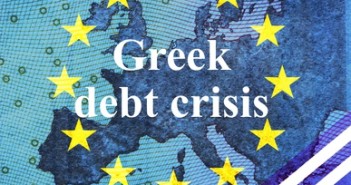Global capital markets have yet to establish a clear trend today while unease continues to impact asset pricing as concerns emerge that the deal established between Greece and its creditors remains tenuous. These concerns relate to reports that the IMF may still walk away from the deal struck with Greece unless there is substantial debt relief as a component of the agreement. While any form of debt relief for the Greeks has been a complete non-starter with the German led members of the Eurozone, the IMF’s participation in the bailout program is contingent on Greece’s ability to eventually return to the capital markets for its financing, whereas the IMF’s own financial projections indicate that this goal is unattainable without a significant reduction in Greece’s sovereign debt. With this in play, the question remains whether this latest deal struck is indeed the final word on the Greek saga.
While European capital markets remain steady, Chinese equities have lapsed back into negative territory with a 3% decline today despite new data releases that indicated that GDP, retail sales and industrial production in the Middle Kingdom all beat expectations for the month of June, as the easing steps put in place by Beijing begin to influence the real economy. Responding to this news and the continued tension in Europe the major currencies have shown little signs of direction as price action remains subdued. Despite employment and wage growth misses in the UK the sterling has posted modest gains versus the big dollar and the euro, while pricing in the euro versus the buck is essentially flat. Both the aussie and kiwi dollars are on a relatively stronger footing versus the dollar as the positive developments in China feeds into pricing for the south pacific pair, while the yen has lost ground to the buck as the BoJ revised its growth forecast for Japan downwards to 1.7%.
Heading into the North American session, today is certain to be eventful with both a rate policy decision to be made in Canada along with public testimony from Janet Yellen of the Fed. With the shift and subsequent divergences in policy stances on the part of the two central banks being the single biggest driver of the three fold increase in intraday volatility on the USDCAD since January, today is set to be another exceptionally volatile day for the pair. As pundits in Canada discuss the possibility of a potential rate cut on the part of the Bank of Canada to contend with a slowing economy brought about by sharply lower crude oil prices, all eyes will be on Poloz today to see if there will be indications of a policy shift on rates or even a change in language as to the BoC’s sentiment towards the Canadian economy. While we do have some economic data releases on deck for the Canadian and American economies expect those data points to be overshadowed by the commentary emanating from the leaders of both banks later today.
Further reading:
UK the sterling
GDP



